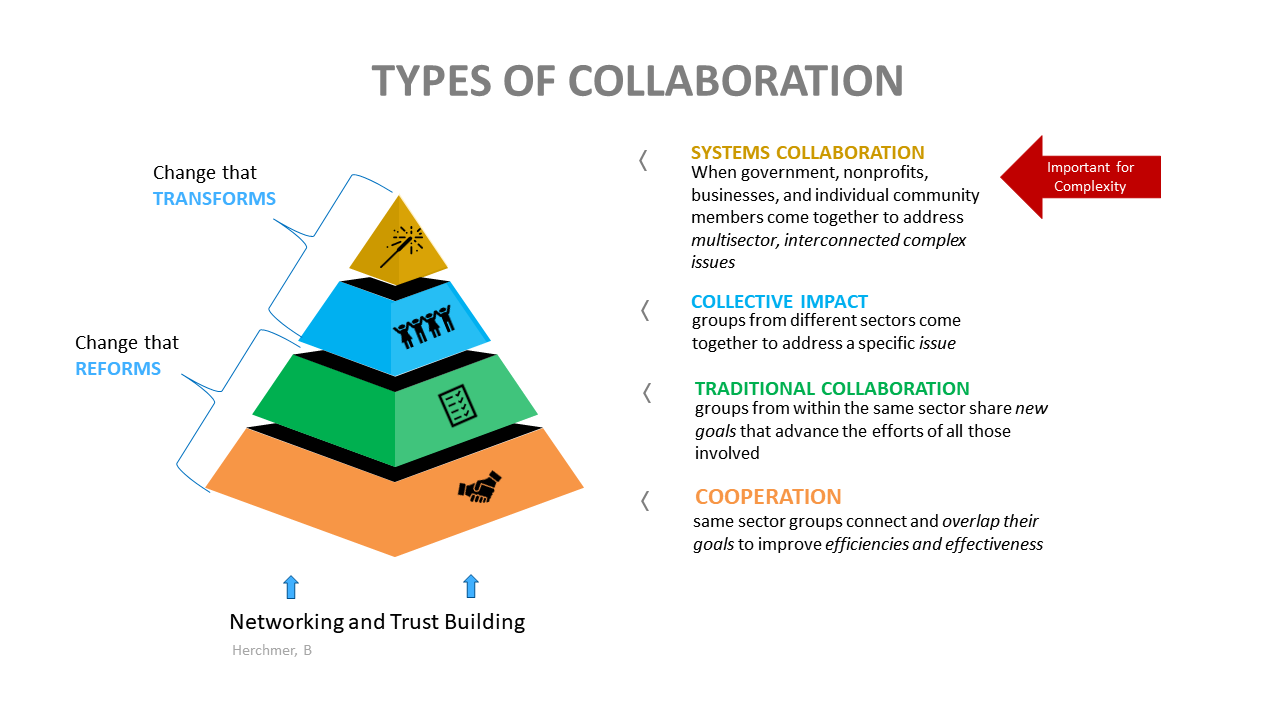If a Three Year Old Can Understand Collaboration…

Our youngest son wasn’t quite three years old at the time when his older brother unexpectedly gave him one of his coveted GI Joes so they could play together.
As the result of being the recipient of such unexpected generosity, he turned to me, grinned, and said, “Mommy, that’s collaboration.”
While I was sure a child with that kind of a vocabulary was a genius, upon questioning, I soon realized that he had simply absorbed collaboration as the word of the day from Sesame Street.
However, it seems he may have been on to something because collaboration is, or at least should be, a key word in our vocabulary.
Today it seems business, government, and social-profit organizations are all talking about the importance of cooperation, collaboration, and collective impact.
While it is a necessary response to complex issues and demands, the internet and the influence of Covid-19 has made us all much much more savvy in terms of connecting online. That, when combined with a drive to save money, reduce duplication, and produce more and better responses, products and services, does suggest working together needs to be a priority.
Unfortunately, there is often confusion about the terminology as too often the terms cooperation, collaboration, and collective impact are used inter-changeably when they are actually quite different.

Cooperation occurs when groups connect and overlap their goals to improve efficiencies and effectiveness while maintaining their respective mandates and responsibilities. It usually involves organizations from the same sector or those who have similar responsibilities but are often cooperating because they have to. Coming at it from a scarcity mindset, the focus is typically about protecting and defending one’s piece of the pie.
While traditionalcollaboration also typically involves groups from the same sector, it is based on an abundance mindset, with the intent of working together to create a bigger pie for all. The groups develop new shared goals that promote the efforts of the larger collective, exchanging individual approaches for new ways to share information, resources, and responsibilities. By way of example, I used to be part of a collaborative that resulted in joint advocacy and training for recreation practitioners across a region of twelve municipalities.
Collective impact is a phrase coined by the Stanford Social Innovation Review to describe groups from different sectors coming together to solve a specific social problem. Today there are many examples of communities who have come together to tackle complex issues such as poverty, addictions, housing, or to get people more physically active.
While cooperation and collaboration are good places to begin working together, they typically result in change that reforms — not necessarily the transformative change that is the result of collective impact.
We also need to think more about a fourth kind of working together that is best described as systems collaboration. That happens when multiple stakeholders such as government, social profits, business, and others come together to address their system or community from a holistic or systems perspective examining both assets and challenges and considering a balance between economic development and quality of life.
While systems collaboration is more complex given that it ideally is an inclusive stakeholder or community-driven movement involving diverse represenatives, it typically leads to the trusted relationships and innovation that is essential for transformational change and nimble, responsive organizations, businessess, and/or communities positioned for the future.
So while our youngest may not be a genius, today he’s a pretty intelligent young man who I think would agree that more cooperation, collaboration, collective impact, and systems collaboration are exactly what we need.
Next entry: A Key Component of Planning in Changing Times
Previous entry: Weaving a Better Future Together

 Brenda Herchmer is the owner of Grassroots Enterprises, a community development consulting company.
Brenda Herchmer is the owner of Grassroots Enterprises, a community development consulting company.